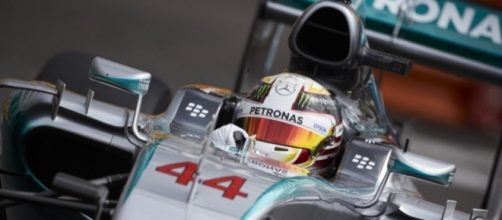One of the world's fastest sports roars back into life in the early hours of next Sunday as the 2017 Formula 1 season launches in Albert Park, Melbourne with the Australian Grand Prix. 2017 is all about change, with new cars, new regulations and new leaders controlling the sport.
The reigning champion might have retired but can anyone topple #Mercedes GP for the first time since the hybrid era of the sport began in 2014? Testing suggests we could get a closer championship than what we've witnessed in recent seasons.
Car changes
In an effort to appease complaints about pure racing, 2017 should see a return to the fast chase that Formula One is all about.
Front rear, rear wing and sidepods have all been made wider in size and this will increase aerodynamic efficiency for the cars. It might make overtaking more of a problem but considering how easy it has been at times in recent seasons, thanks to the artificial DRS (Drag Reduction System), that might not be such a bad thing.
Downforce has increased with these changes and so should the cornering speeds. On average, most circuits should see lap times reduced by around three seconds. Records were tumbling at the Circuit de Catalunya in Barcelona where winter testing has taken place.
Tyres have also seen huge change. Italian tyre supplier Pirelli has produced rear tyres that have increased in size from 325mm to 405mm and front tyres increase from 245mm to 305mm.
This should produce more durability and therefore, the end of multiple pitstop races barring wet-weather events or abrasive track surfaces like Montreal and Spa.
Wet-weather standing starts, an increase in the maximum weight limit of the cars and changes to in-season engine development are among the other changes.
No more Bernie
In January, Bernie Ecclestone was usurped from his role as the ultimate head of Formula One. The 86-year-old controlled all the commercial rights to the sport and although he put F1 in a better place than it was when he took over in 1977, he became very unpopular in more recent seasons.
The lack of free-to-air TV coverage and bizarre proposals like double-points final races, last-man standing qualifying and gold medal points outcomes showed how much he was starting to lose touch with the Grand Prix fraternity.
New owners Liberty Media have already promised a fresh approach to the sport. Ex-Ferrari technical director Ross Brawn is back as one of the senior figureheads of the new era, alongside new chief executive Chase Carey and Sean Bratches as Commercial Operations Managing Director.
Who will succeed Nico?
Just five days after winning his maiden championship in Abu Dhabi, Nico Rosberg stunned everyone by announcing his decision to retire from the sport with immediate effect. It means for the first time since 1994, the reigning champion won't start the following season on-the-grid.
2009 champion Jenson Button has also retired but Felipe Massa made a sensational u-turn and returned to Williams in January after Valtteri Bottas was confirmed as Rosberg's replacement at the all-conquering Mercedes GP line-up.
Other driver changes have seen Nico Hulkenberg swap Force India for Renault, Kevin Magnussen replace Esteban Gutierrez at Haas, Esteban Ocon moving to Force India and Pascal Werhlein checking in at Sauber. Manor went bust in January, meaning we are down to 20 cars on the grid and sadly, all of the new teams that entered in 2010 have now collapsed.
So who will succeed Nico? Lewis Hamilton is the clear favourite to win a fourth drivers' title but Ferrari's impressive winter testing form suggests a more serious challenge from Sebastian Vettel and possibly Kimi Raikkonen. Max Verstappen and Daniel Ricciardo shouldn't be discounted at Red Bull, whilst Bottas has all the qualities to give Hamilton some headaches at Mercedes.
The Silver Arrows will head to Melbourne as justified title favourites but it could be a lot closer than it has been in recent campaigns. A lot of questions should be answered next weekend.

